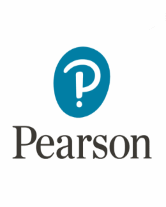Objective
This lesson is for students in the primary grades who are familiar with place-value manipulatives, can identify the number that is one more or one less than a given two-digit number, and can count by tens to 100. Students will review identifying and writing the number that is one more or one less than a given one or two-digit number and ten more or ten less than a given one- or two-digit number.
Materials
overhead projector, if desired
Procedure
Demonstration
Display the place-value manipulative that students will be using on the overhead projector or in some area of the classroom that all students can see.
Review with students how to represent a two-digit number and how to add or subtract one cube to find the number that is one more or one less. Model how to write the numbers on a place-value chart, recording the number of ones and tens in their respective columns. Discuss in which places the digits change when the number is one more or one less than another.
Next, display the number 40 using manipulatives, and record it on the place-value chart. Have students read the number. Ask students to think of a way to show the number that is 10 more than 40 and then to do so using different manipulatives. Adding 10 can be represented by 10 ones-blocks, a ten-stick, moving down a row on a hundreds chart, and so on.
Add a ten stick to the number displayed, and ask students to identify the number that is ten more than the last number. Record the number 50 on the place-value chart, and have students read it. Compare it with the number 40, and elicit that while the tens digit changed by one, the ones digit remains unchanged. Next, display a two-digit number that has a digit other than zero in the ones place. Add a ten-stick to show the number that is 10 more, and record and read the pair of numbers. Repeat these steps using other one- and two-digit numbers.
After several examples, have students think of a rule for adding 10 to a number. They can discuss their ideas with a partner and either write out the rule in words or draw a representation of their rule. To test their rule, have students use it on one and three-digit numbers to see if they get the correct results. Have students share their results and see if other students can use their rule successfully.
Following the same steps, model numbers that are 10 less than given two-digit numbers. Elicit suggestions from students on how to show this new number, and then model taking away a ten-stick from the displayed number. Begin with numbers that are multiples of 10, and then continue with numbers that are not multiples of 10. Record and read each pair of numbers on the place-value chart. Reinforce the idea that the tens digit changes.
Guided Practice
Have a variety of representations available for students to use such as place-value blocks, bean sticks, symbols, number lines, and hundreds charts.
Write various one- and two-digit numbers on the board and have students, working independently or in pairs, represent them using manipulatives. For each number, have students record on place-value charts the number of ones and tens. Then ask students to read the number. Also ask them to display, record, and read the number that is one more, one less, ten more, and ten less, and to be sure they include at least two examples of each. Have them compare the pairs of numbers and identify the place or places where a digit changed. You may want to rotate the manipulatives so each group of students has an opportunity to use a variety of models to represent their numbers.
Sharing Ideas
Write a two-digit number on the board. Have students share their ideas on how to determine and display the number that is one more, one less, ten more, and ten less.
Independent Practice
Write various one- and two-digit numbers on the board. Have students write the number that is one more, one less, ten more, or ten less. If students need to, allow them to continue using manipulatives to do this.
Assessment
Assess students by reviewing the work they do for independent practice.

Students will review identifying and writing the number that is one more or one less than a given one or two-digit number and ten more or ten less than a given one- or two-digit number.



